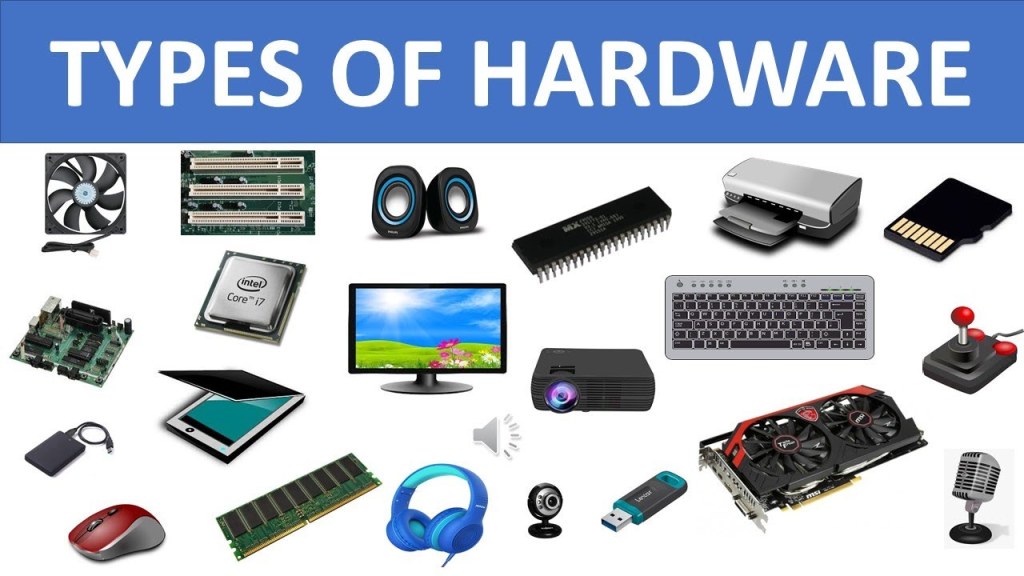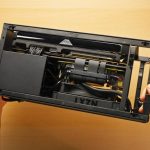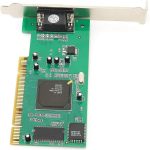Discover 5 Examples Of Computer Hardware: Unleash Your Tech Potential Now!
Computer Hardware: 5 Examples
Introduction
Hello Readers,
1 Picture Gallery: Discover 5 Examples Of Computer Hardware: Unleash Your Tech Potential Now!

Welcome to our informative article on computer hardware. Today, we will be discussing five examples of computer hardware that are essential components of any computing system. Understanding computer hardware is crucial in order to make informed decisions when purchasing or upgrading your devices. So, let’s dive right in and explore the world of computer hardware.
Overview

Image Source: ytimg.com
Computer hardware refers to the physical components of a computer system. These components include the central processing unit (CPU), memory modules, storage devices, input/output devices, and motherboards. Each of these examples plays a vital role in the overall performance and functionality of a computer.
1. Central Processing Unit (CPU) 🖥️
The CPU, often referred to as the brain of a computer, is responsible for executing and coordinating various tasks. It processes instructions, performs calculations, and manages the flow of data within the computer system.
What is a CPU?
The CPU is a microprocessor that carries out instructions given by software programs. It consists of an arithmetic logic unit (ALU), control unit, and cache memory.
Who Invented the CPU?
The CPU was invented by Federico Faggin, Marcian Hoff, and Stanley Mazor in the early 1970s. Their invention revolutionized the computer industry and paved the way for modern computing.
When Was the First CPU Created?
The first CPU, called the Intel 4004, was created in 1971. It was a 4-bit microprocessor that could perform basic calculations and had a clock speed of 740 kHz.
Where is the CPU Located?
The CPU is located on the motherboard, which is the main circuit board of a computer. It is usually covered by a heat sink and fan to prevent overheating.
Why is the CPU Important?
The CPU is the most crucial component of a computer as it determines the overall speed and performance of the system. It is responsible for executing instructions and carrying out complex calculations.
How Does a CPU Work?
The CPU fetches instructions from memory, decodes them, and then executes them. It performs operations such as arithmetic calculations, logical comparisons, and data transfers.
Advantages and Disadvantages of CPUs
Advantages:
High processing power
Ability to handle complex tasks
Compatibility with a wide range of software
Disadvantages:
High cost
Potential for overheating
Limited upgradeability
2. Memory Modules 💾
Memory modules, also known as RAM (Random Access Memory), are responsible for storing data that the CPU needs to access quickly. They provide temporary storage for instructions and data during the execution of programs.
What are Memory Modules?
Memory modules are electronic components that store data and instructions temporarily. They are made up of integrated circuits and are connected to the motherboard.
Who Invented Memory Modules?
The concept of memory modules was developed by Robert Dennard, an IBM engineer, in the late 1960s. His invention led to significant advancements in computer memory technology.
When Were Memory Modules First Used?
Memory modules were first used in commercial computers in the early 1970s. They replaced older memory technologies, such as magnetic core memory.
Where are Memory Modules Located?
Memory modules are inserted into slots on the motherboard. They are usually located near the CPU for faster data access.
Why are Memory Modules Important?
Memory modules play a crucial role in the overall performance of a computer. They determine the amount of data that can be processed at a given time, affecting the multitasking capabilities of a system.
How Do Memory Modules Work?
When the CPU needs to access data or instructions, it sends a request to the memory modules. The modules retrieve the requested information and send it back to the CPU for processing.
Advantages and Disadvantages of Memory Modules
Advantages:
Fast data access
Ability to run multiple programs simultaneously
Expandable storage capacity
Disadvantages:
Volatility – data is lost when the computer is powered off
Higher cost compared to secondary storage
Limited storage capacity compared to secondary storage
3. Storage Devices 🗄️
Storage devices are used to store and retrieve data in a computer system. They provide long-term storage for files, documents, operating systems, and software applications.
What are Storage Devices?
Storage devices are hardware components that store data persistently, even when the computer is powered off. They can be classified into two types: primary storage and secondary storage.
Who Invented Storage Devices?
The concept of storage devices dates back to the early days of computing. However, the first commercial hard disk drive (HDD) was invented by IBM in 1956. It had a storage capacity of 5 MB.
When Were Storage Devices First Used?
Storage devices have been used since the early days of computing. However, the technology has evolved significantly over the years, leading to increased storage capacities and faster read/write speeds.
Where are Storage Devices Located?
Storage devices can be internal or external. Internal storage devices, such as hard disk drives and solid-state drives, are usually located inside the computer case. External storage devices, such as USB drives and external hard drives, are connected to the computer via USB ports.
Why are Storage Devices Important?
Storage devices are essential for storing and retrieving data in a computer system. They provide a means of long-term data storage and allow users to access their files and programs at any time.
How Do Storage Devices Work?
Storage devices use various technologies, such as magnetic storage or solid-state storage, to store data. When data is saved or retrieved, it is read from or written to the storage medium.
Advantages and Disadvantages of Storage Devices
Advantages:
Large storage capacities
Non-volatile – data is retained even when the computer is powered off
Portable – external storage devices can be easily carried around
Disadvantages:
Slower read/write speeds compared to primary storage
Prone to mechanical failure
Higher cost per unit of storage compared to primary storage
4. Input/Output Devices ⌨️🖱️🖨️
Input/output devices are used to interact with a computer system. They allow users to input data and commands into the computer and receive output in the form of text, images, or sound.
What are Input/Output Devices?
Input devices are used to provide input to a computer system. Examples include keyboards, mice, scanners, and microphones. Output devices, on the other hand, display or transmit data from the computer. Examples include monitors, printers, and speakers.
Who Invented Input/Output Devices?
Input and output devices have been in use since the early days of computing. The keyboard, for example, was invented by Christopher Latham Sholes in 1868. Other input/output devices have been developed over time to meet the evolving needs of computer users.
When Were Input/Output Devices First Used?
Input and output devices have been used since the early days of computing. However, the technology has advanced significantly, leading to the development of more sophisticated and user-friendly devices.
Where are Input/Output Devices Located?
Input devices are usually connected to the computer via USB ports or wireless connections. Output devices, such as monitors and printers, are also connected to the computer for data display or printing.
Why are Input/Output Devices Important?
Input devices allow users to interact with the computer system by providing input, such as typing on a keyboard or clicking a mouse. Output devices, on the other hand, allow users to receive visual, audio, or printed output from the computer.
How Do Input/Output Devices Work?
Input devices convert physical actions, such as keystrokes or mouse movements, into digital signals that the computer can understand. Output devices, on the other hand, convert digital signals into human-readable or perceptible form, such as displaying images on a monitor or printing documents.
Advantages and Disadvantages of Input/Output Devices
Advantages:
Facilitate user interaction with the computer
Enable data input and output
Wide range of devices available to suit different needs
Disadvantages:
Potential for input errors
Dependency on external devices for data input/output
Cost of devices can vary depending on features and quality
5. Motherboards 📠
The motherboard is the main circuit board of a computer. It provides a platform for all the other hardware components to connect and communicate with each other.
What is a Motherboard?
The motherboard is a printed circuit board that houses the CPU, memory modules, storage devices, and other essential components of a computer system. It provides electrical connections and pathways for data transfer between these components.
Who Invented the Motherboard?
The motherboard, as we know it today, is the result of contributions from various inventors and engineers. It has evolved over time to meet the changing needs of computer systems.
When Was the Motherboard First Used?
The concept of a motherboard can be traced back to the early days of computing. However, the modern form of the motherboard became prevalent in the 1980s with the introduction of personal computers.
Where is the Motherboard Located?
The motherboard is located inside the computer case. It is usually mounted on standoffs and secured to the case using screws.
Why is the Motherboard Important?
The motherboard is essential as it provides a platform for all the other hardware components to connect and communicate with each other. It ensures that data can flow seamlessly between different components, allowing the computer system to function properly.
How Does a Motherboard Work?
The motherboard acts as a central hub for all the hardware components of a computer. It provides power and data connections for these components and ensures that they work together harmoniously.
Advantages and Disadvantages of Motherboards
Advantages:
Allows for easy customization and upgradeability
Provides a platform for all hardware components to connect
Supports various input/output interfaces
Disadvantages:
Can be expensive to replace if it becomes faulty
Compatibility issues with certain hardware components
Requires technical knowledge to install or troubleshoot
Frequently Asked Questions (FAQ)
1. Can I upgrade the CPU in my computer?
Yes, in most cases, the CPU can be upgraded. However, you should ensure that the new CPU is compatible with your motherboard and other hardware components.
2. How much RAM do I need for my computer?
The amount of RAM you need depends on your specific requirements. For basic tasks, such as web browsing and word processing, 4-8GB of RAM should be sufficient. For more demanding tasks, such as gaming or video editing, 16GB or more may be recommended.
3. What is the difference between HDD and SSD?
HDD (hard disk drive) and SSD (solid-state drive) are different types of storage devices. HDDs use spinning disks to store data, while SSDs use flash memory. SSDs are generally faster and more reliable than HDDs, but they are also more expensive.
4. Can I connect multiple monitors to my computer?
Yes, most modern computers support multiple monitors. You can usually connect additional monitors using the available display ports or through a docking station.
5. How often should I clean my computer hardware?
It is recommended to clean your computer hardware, such as the CPU fan and keyboard, at least once every few months. Regular cleaning helps prevent dust buildup and ensures optimal performance.
Conclusion
After exploring the five examples of computer
This post topic: Computer Hardware


